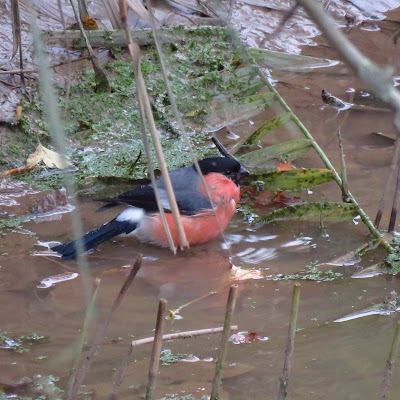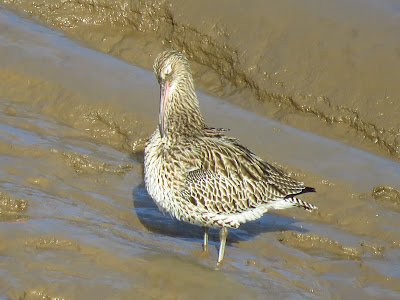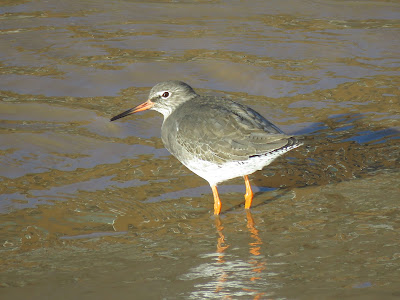
I took a long walk through town today. I decided that lockdown must start early, so I'm going to do an winter version to the spring lockdown series, in which I walked from home around Hull, recording breeding birds in complete Birdtrack lists (lockdown birding series). The rules are, only visit sites within walking distance, and trying to avoid the main thoroughfares to reduce social contact. Today's route took me through Pearson Park, to Sculcoates Lane, along Beverley and Barmston Drain, then to Freetown Way, Queens Gardens and along the River Hull from Drypool bridge and back through a similar route, but this time via Wilcolmlee.
Starlings socially distance atop an ornate railing on a rooftop at Beverley Road.
The forecast gave a chance of rain in mid morning, but this didn't materialise, instead the sky eventually cleared and it was quite sunny, which was a very nice bonus.Blackbird bathing at Beverley and Barmston Drain.
Magpie.
Pied Wagtail by Lockwood Street.
Bullfinch bath time.
A 84 strong skein of Pink-footed Geese flying over Hull.
A flock of Long-tailed tits made their way across the drain.
A view of Queens Gardens.
Young moorhens foraging at Queens Gardens. Probably the same that were tiny chicks during the first lockdown.
I'm always pleased to see a Curlew on the river Hull. Is it always the same individual? They are long-lived birds and they might favour a particular wintering spot. This time a Curlew was preening on the river bank by Scale Lane bridge and I could take its portrait with a nice light.
Hard to reach your chest when you have such a long bill.
There was about half a dozen Redshank. They were active and there was lots of piping. Two, including this bright individual, kept chasing.
Redshank.
These Black-headed gulls were involved in a pair bonding display including patting the ground and looking down with wings away from the body.
The saltmarsh by the River Hull at the Museums Quarter
There is a little green space behind the Charterhouse and I visited it on my way back. It is an old walled Georgian burial ground with mature trees, tucked away from view from Freetown Way. I was surprised by this Red Admiral alighting on the ground to bask in the sun. Goldfinches and Chaffinches fed on a London plane tree.
A Sparrowhawk gliding over the Beverley and Barmston Drain.
Featured bird: Curlew RED LISTED
An elegant large wader, with an extraordinary bill, that they use to Curlews are in trouble. Their populations have suffered strong declines, particularly the British breeding population. The mudflats of the Humber form an nationally important habitat for wintering Curlews, which visit us from Scandinavia and Russia. About 2,600 curlews winter in the Humber each year. From October to March, it is not unusual to find the odd Curlew on the mudflats just off the city of Hull, and near The Deep in the River Hull, where they can be observed at close range.


















No comments:
Post a Comment